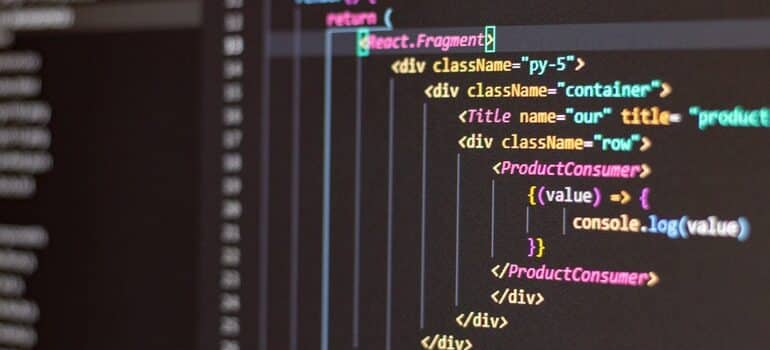For 20 years, Google Ads has been a great advertising option for businesses that want to control their ad spending. When it was first introduced, advertising managers were expected to manually set maximum bids for all keywords they wanted their ads to be eligible for. While this allowed for great control over expenses, it was a tedious job. And today, most businesses prefer to automate this process. In fact, Google itself is encouraging Google Ads automation for movers with every update to the platform. So it’s time to learn more about how to make sure your transition to automation goes smoothly. As professionals on the subject of digital marketing for moving companies, Movers Development possesses the experience necessary to provide you with the input you need.
How does Google Ads automation for movers work?
Automated bidding has been a part of Google Ads since 2007. In that time, it has improved leaps and bounds. Good thing, too – because automation is about to become the norm when it comes to Google Ads management for moving companies and manual bidding is about to be a thing of the past. The goal is for the platform to become entirely AI-driven, without even the ability to bid manually.

How would that work, then? Automating Google Ads is relatively simple. All you need to do is set up some rules. You get to decide when to bid, how much to bid, when to stop bidding, and more. Then, Google’s AI uses the data it’s collected from your previous bids and their results to guess what will work best within your rules and acts accordingly. It should run smoothly from there. But the truth is that things do still go wrong sometimes. So it’s important to keep an eye on your automated bids, especially if you’re not working with a lot of data, to begin with.
The pros and cons of Google Ads automation for movers
While we expect Google Ads to run on automation entirely in the near future, we are not quite there yet. So you may want to stick to manual bidding in the meantime. Why is that? Well, the truth is that Google Ads automation can have some downsides. So here’s why some companies choose to generate top moving leads with manual bids on ads:
- even Google’s bots are fallible: machine learning has come a long way, but it still has a long way to go too; no matter how well you set up your automated campaigns, Google’s AI will occasionally go completely off the rails and do something inexplicable.
- sometimes, changes take time to sync up: any changes you make to your automated bidding will take effect in a few hours at best; for immediate changes, the manual is always better.
- you don’t have as much control once you switch to automation: you’ll still be making the big decisions like which strategy to use and where to cap expenses, but the day-to-day decisions will be made for you by the AI – that’s the whole point of automation.

On the other hand, Google Ads automation has huge benefits too. It is:
- fast and convenient: you can save a lot of time by letting the AI do the work
- effective: once the AI has enough data, it’ll probably make better and faster bids than you
- scalable: when your advertising needs grow, it’ll be easier for bots than for your team to keep up
Strategies for Google Ads automation for movers
Like any other type of PPC campaign, automated bidding starts with a strategy. Depending on your goals and how much money you want to spend on advertising, you can choose to focus on different things.
Maximizing conversions
Going for as many conversions as possible may seem like a good idea, but this strategy is very risky. There are no bids on individual keywords – instead, Google will do anything to get a user who will convert. For this to have any chance of success, you need to have your conversion tracking on. Otherwise, the AI won’t be able to accurately calculate the risk/reward of a bid.
Finally, keep in mind that this is not the most cost-effective strategy. By design, it will spend your daily budget every time. And the results can be fantastic or disastrous.
Maximizing clicks
A similar strategy to maximizing conversions is maximizing clicks. Google will aim to get as many clicks as possible within your daily budget. This is a great strategy when the goal is to drive traffic to your website. But as with maximizing conversions, it can be costly as the AI will aim for clicks even when they are more expensive than usual. So keep an eye on your cost-per-click.
Maximizing conversion value
To combat some of the issues with maximizing clicks or conversions, you can try maximizing conversion value. This strategy will try to maximize the total conversion value for your entire campaign so that you get the most clicks at the best prices. In theory, this should improve the ROI of your marketing campaign. But you’ll still spend your entire daily budget so make sure to set it to something you can realistically afford.
Targeting CPA
For better control over your spending, you may want to set a target cost per acquisition. This allows you to set the amount you want to pay per conversion; Google then aims to get as many conversions as possible at that average price. It’s important to keep in mind that you’re setting the cost on a campaign or portfolio level – not for individual keywords or even individual bids. For this strategy to work, you’ll need to have your conversion tracking on.
Targeting ROAS

To focus more on how much return you’re getting for the amount that you spend on each ad, you’ll want to target the return on ad spend or ROAS. You start by setting this metric; Google then tries to maximize conversion value within this target based on your bidding history. Because it draws data from the way your ads have performed in the past, it is necessary to start when the algorithm already has enough information to avoid any mishaps.
Targeting impression share
If you want to test out Google’s newest strategy for automated ad bids, try targeting impression share. This strategy is intended for those who want to increase visibility on the search results page, regardless of clicks or conversions. You’ll set the bid limits and decide whether you want your ad to show up at the top of the page only or if you’ll settle for anywhere on the page. The AI will then make bids that land your ads where you want them within your price limit. Keep an eye on the CPC though as visibility only gets you so far and you don’t want to run an unprofitable campaign.
Should you automate Google Ads bidding?
At the moment, Google Ads automation for movers is still optional. So you may opt to stick to manual bids instead. Whether you should is another question. If automation is ultimately inevitable, learning how to do it properly now when you can still correct mistakes with manual bids, is a good idea.
Furthermore, you want to use this time to create a data pool for Google’s AI to draw from when you switch to automation. This will help you run better and more profitable campaigns in the future. If you’re already confident in your abilities to set the rules for automated bidding and you have enough history with Google Ads, then you’re all set. So let the automation begin.






